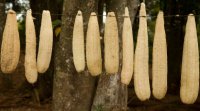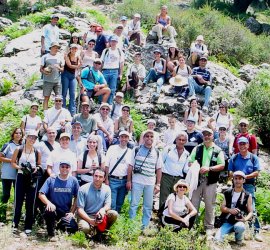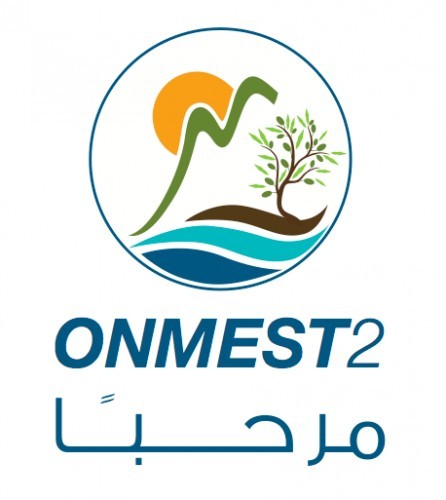
Combine Loofah and Plastic Waste to Make Low-Cost Housing
In the poverty-stricken countryside of Paraguay, a landlocked country in the heart of South America, an innovative social activist has found a new use for an old vegetable. Determined to find a market for the loofah waste, Elsa Zaldívar teamed up with Pedro Padrós, an industrial engineer, to search for a way to use the vegetable material to construct inexpensive panels for walls and roofing for building houses. She had realized that if the first step to improving the lives of the poor was increasing their income, the next was to help them find decent housing, which would dramatically raise their living standards. Zaldívar was highly enthusiastic. But, disappointingly, initial efforts to mix loofah with different types of glues did not produce the desired result, mainly because of the high costs involved.
Then Padrós got the idea of using plastic waste with the loofah. He invented a machine that melted a mixture of three types of recycled plastic and combined the resulting liquid with loofah and other vegetable fibres, such as cotton netting and chopped corn husks. After hundreds of trials, the results began to produce a working product. With help from Paraguay’s environment ministry, Base ECTA (a non-profit organization headed by Zaldívar) obtained a grant from the Inter-American Development Bank to construct the prototype of a machine to produce thepanels. Combining a melting unit, mixer, extruder and cutting unit, the machine can produce – in an hour – a half-metre-wide panel 120 metres long. Depending on the exact mix of plastics and fibres, as well as the thickness of the panel, the composite can have varying amounts of flexibility, weight and insulating qualities, making it adaptable to a variety of construction needs. Colouring can be included in the panel’s plastic mix at the time of fabrication, so there is no need to paint the walls after construction, saving homeowners time and money. Padrós says a panel of even greater strength can be created by using a honeycomb or earthen filler, as well as vegetable matter, to create a sandwich of two panels.
The composite panels are easier to handle than lumber or brick, and much better than conventional materials in an earthquake or other natural catastrophe. Combined with special metal connectors, “it will bend but not break”, Padrós says. And if a house does collapse, he says, someone is much more likely to survive if the walls are lighter in weight than conventional materials. And using the panels will help spare the nation’s forests. “Because we’re using fibres that are completely renewable, we can stop using lumber for construction. That’s very important in Paraguay because we’ve already reduced our original forest to less than ten per cent of Paraguay’s territory,” Zaldívar points out. “We’re running out of trees.” The project’s success derives from the unique combination of Padrós’ engineering skills with Zaldívar’s genius in creating an integrated system of cultivation, recycling, production and distribution. In addition to the loofah producers, Zaldívar is working with recyclers in urban areas in order to guarantee a flow of appropriate plastic, and with groups of women to provide the tonnes of corn and palm husks, for example, that will be needed – all materials that would otherwise end up in landfills.
Reference:
http://www.mectat.com.lb/metopics/Recyclable%20homes/Recyclable%20homes.htm






 Karim Maalouf
Karim Maalouf

Ziad Mikhael Akl
16 years ago